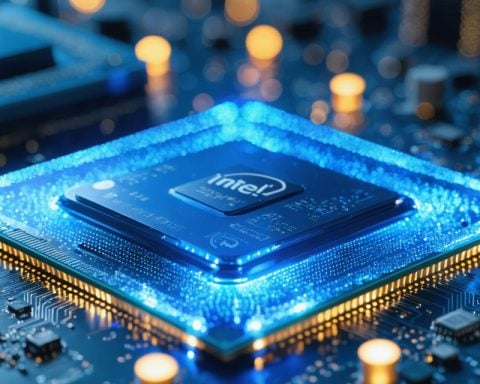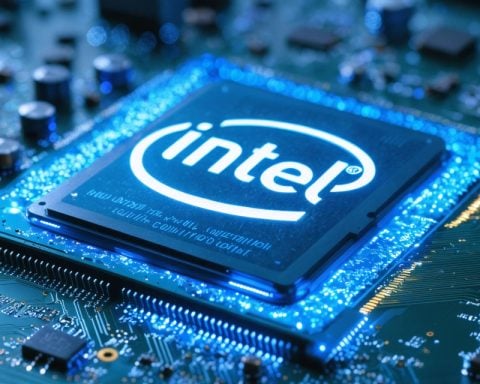- The SEC’s acknowledgment of XRP-linked ETFs highlights XRP’s potential as a transformative force in the crypto space.
- A court ruling declared XRP not a security in secondary markets, yet questions persist regarding its direct sales as unauthorized securities.
- Following the SEC’s acknowledgment, XRP’s trading volumes and price experienced a significant surge, indicating potential regulatory shifts.
- Legal challenges faced by major exchanges like Binance and Coinbase may influence the regulatory approach towards digital assets.
- Potential leadership and strategy changes within the SEC could further impact XRP’s standing and the broader crypto landscape.
In the ever-evolving saga of cryptocurrency, Ripple’s XRP has stepped into the spotlight. The U.S. Securities and Exchange Commission (SEC) has recently acknowledged XRP-linked exchange-traded funds (ETFs), sparking a whirlwind of speculation and a glimpse into XRP’s transformative potential. This nod may be the key to unlocking a broader acceptance of XRP as a commodity, setting the stage for a groundbreaking shift in the crypto landscape.
Picture XRP as a lone beacon in a dense forest, surrounded by towering giants like Bitcoin and Ethereum, longing for the same legitimacy. However, the SEC’s unresolved stance shrouds XRP in ambiguity, with questions lingering over its classification and legal standing. Despite a court ruling declaring XRP not a security in secondary markets, the shadow of uncertainty looms over Ripple’s direct sales, labeled as unauthorized securities.
The ripple effect of the SEC’s acknowledgment was instantaneous. Like a bustling marketplace, trading volumes soared, and XRP’s price skyrocketed to $2.84, hinting at a softening of the regulatory landscape. This moment could steer the regulatory compass for all digital assets, especially with crypto powerhouses like Binance and Coinbase entangled in legal challenges.
As murmurs of leadership changes within the SEC circulate, whispers suggest a potential shift in strategy. Should the SEC disentangle from its legal conflict with Ripple, XRP might surge past its previous limits, painting a vivid picture of a future where change dictates the tides.
For now, the crypto world remains on edge, eyes fixed on an uncharted horizon. Could XRP be on the brink of a revolutionary breakthrough? The answer may shape the very future of cryptocurrency.
Is XRP Set to Revolutionize the Crypto Market? Discover the Potential Shifts on the Horizon!
Market Analysis: Assessing XRP’s Position Among Giants
1. How does the SEC’s acknowledgment of XRP-linked ETFs affect XRP’s legitimacy and market position?
The acknowledgment by the SEC of XRP-linked ETFs is a significant milestone for Ripple. This could pave the way for broader institutional acceptance and adoption, potentially elevating XRP to the status of established cryptocurrencies like Bitcoin and Ethereum. With ETF listings, XRP may attract more traditional investors, increasing liquidity and trading volume. If the SEC eventually categorizes XRP as a commodity, it could further legitimize the currency, opening doors to new use cases and partnerships in the financial sector.
2. What are the potential pros and cons of the SEC’s position on XRP?
Pros:
– Increased Legitimacy: SEC’s acknowledgment might lead to recognized commodity status, enhancing trust among investors.
– Broader Institutional Acceptance: ETF approvals can attract institutional investors, resulting in increased capital flow and stability.
– Regulatory Clarity: A decisive classification might clear existing ambiguities, enabling Ripple to engage in new projects and alliances.
Cons:
– Regulatory Uncertainty: Ongoing legal conflicts could deter potential investors until definitive decisions are made.
– Market Volatility: Speculative trading around the SEC’s decisions can lead to price instability.
– Potential Backlash: A clear stance might invite scrutiny or regulations that could hinder rapid growth.
3. How could leadership changes in the SEC impact Ripple’s future dealings and XRP’s market performance?
Leadership changes within the SEC might usher in new regulatory approaches or shifts in policy focus, potentially resolving legal conflicts with Ripple. A shift towards a more crypto-friendly regulatory environment could stimulate XRP’s growth, possibly making it more appealing to mainstream investors. Conversely, if the leadership maintains a stringent stance, Ripple might face continued regulatory hurdles.
Use Cases: Expanding Ripple’s Horizons
– Cross-Border Payments: Faster and cheaper international transactions using XRP could disrupt traditional banking systems.
– Decentralized Finance (DeFi): XRP might offer an alternative to traditional finance, especially in regions with unstable currencies.
Security Aspects: Ensuring Safe Transactions
Ripple has prioritized security, employing advanced cryptographic techniques to safeguard transactions. As the regulation around XRP clarifies, enhanced security features may become a necessity to fulfill regulatory compliance demands.
Predictions: What the Future Holds for XRP
Experts predict that if XRP can navigate the regulatory maze, it could achieve new price milestones and technological advancements, with increased integration into global financial systems.
Related Links:
– Explore more about XRP and Ripple’s mission on Ripple
– For the latest SEC news and its impact on cryptocurrencies, visit SEC
– Stay updated on XRP price and market trends at Binance
In conclusion, XRP’s journey is fraught with challenges and opportunities, much dependent on the regulatory environment shaped by the SEC. As the crypto landscape evolves, Ripple’s responses to emerging legal and market dynamics will be crucial in determining its ultimate legacy.



















